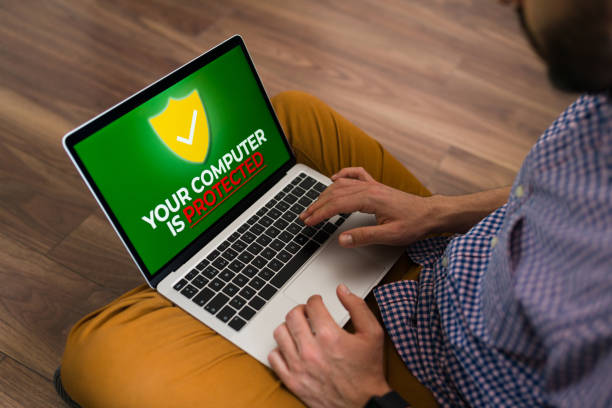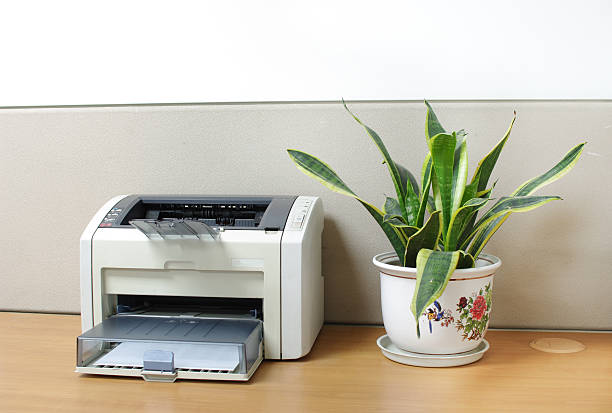
In the current digital era, more and more businesses understand how important it is to monitor their workers’ computer usage. This procedure guarantees higher output and efficiency while also assisting in detecting and avoiding possible security risks. But you must handle this assignment responsibly, protecting the privacy of your staff members and abiding by the law. You may efficiently monitor employees’ computer activities without violating their rights by following the instructions in this blog post.
Recognizing the Value of Employee Computer Activity Monitoring
Understanding how important it is to monitor your staff’s computer usage will improve your management approach significantly. This is due to several vital factors. It primarily enables you to get a real-time picture of productivity levels as a manager. You can determine how much time is spent on particular jobs, which makes it possible for you to deploy resources more wisely.
Monitoring is more than simply a tool for increasing productivity; it may also be an essential defense against security risks. It makes it possible to identify anomalous activity early on, which may indicate a security breach or the improper use of confidential company information. Devastating data leaks and the ensuing harm to one’s finances and reputation can be avoided using these early warning indicators.
In addition, this approach can help identify areas needing professional development and performance evaluation. If a worker routinely has trouble with a specific task, more assistance or training might be required. Similarly, it is possible to quickly handle evidence of wrongdoing, promoting a more moral and expert workplace.
While the benefits are clear, remember to balance the need for monitoring with respect for employees’ privacy. Employees should feel free of being monitored or of a culture of mistrust due to monitoring. Finding this balance is essential to maximizing the benefits of monitoring and preserving a productive work environment.

Creating a concise company policy about computer use
It is essential to lay a solid foundation with an extensive corporate policy about computer usage before delving into monitoring. Your staff should use this policy as a reference point, outlining the proper and improper ways to use business computers. Your policy must be clear-cut, unambiguous, and simple to comprehend.
This policy should be explained to all new team members during onboarding to ensure they know what is and isn’t appropriate behavior. To provide a constant level of awareness, current employees should also be reminded of this policy regularly.
Notifying them that their online activity may be monitored should be vital to this policy. This is important because it conforms with legal obligations for informed consent and promotes transparency and honesty. Recall that a knowledgeable worker is a more cooperative and effective worker.
Developing this policy is also a continuous process. Your policy should be updated and improved to meet new requirements and realities as your organization expands and changes. Now, take out your pen and begin writing an all-inclusive computer usage policy for the company.
Employing Software Tools to Track Employee Behavior
Several software options are to be considered in the digital toolkit for employee computer activity monitoring. Every tool has unique capabilities that assist you in monitoring the productivity levels of your workforce. Some can watch how much time staff members spend using different apps, which can help you spot bad work habits and time management problems. Others can log keystrokes or take screenshots for a more detailed overview of everyday tasks.
But it’s critical to maintain the delicate balance between efficient surveillance and employee privacy protection. The goal should be to provide an adequate work atmosphere rather than micromanage. As a result, you should pick a tool that respects this line and gives the required oversight without being unduly invasive.
Remember that every business is different, and there isn’t one answer that works for everyone. Choose a tool that best suits your organization’s needs after evaluating its unique requirements. Before committing, take advantage of reviews, demos, and free trials to acquire a feel for the program.
Be cautious while utilizing staff monitoring tools, balancing privacy issues and productivity insights. You can identify the sweet spot where productivity rises, and trust is maintained with the appropriate strategy and tool.Probe your options, and elect the bone that stylish suits your company.
Assessing Worker Productivity via Observation
Monitoring employee computer use has many benefits, including measuring productivity. By analyzing the gathered data, you can identify both productive and ineffective work patterns. Data showing, for example, that an employee frequently browses websites unrelated to work while at work may indicate they need to utilize their time to the fullest. But it’s important to exercise caution in passing judgment because every person has a unique work style, and what may appear to be wasted time may be their way of taking quick mental breaks to refuel.
Data analysis can also reveal information on how well work procedures are working. Too much time is being spent by the team on activities that could be streamlined or automated. With this information, you may increase productivity by streamlining the process and eliminating pointless chores.
Remember that this evaluation process’s ultimate objective should be to assist your team in realizing their most significant potential. Instead of utilizing the data to criticize, please use it to help staff members adopt more productive work habits and to identify and commend those doing exceptionally well. A team that performs better and is more motivated can benefit from this positive attitude.
Remember to be transparent with your team as you engage in monitoring-based productivity evaluation. This strategy isn’t meant to catch them off guard; rather, it’s intended to foster their development and the prosperity of your company. Keeping them informed increases the likelihood of developing a culture of trust and shared objectives.
Good Monitoring and Employee Privacy in Balance
It can be challenging to walk the tightrope between privacy invasion and intelligent surveillance, but managers must do this. The secret is never to forget that your staff members are people, not just employees, who should be treated with dignity. Crossing this line could result in diminished morale and a loss of trust.
Even while it’s important to know what’s going on with the computers used by your firm, unless there is an urgent need for legal or security concerns, refrain from snooping around in obviously private places such as private emails or personal communications. Discretion goes a long way in preserving a positive working relationship between management and employees.
Your best ally in this delicate balancing act is transparency. Make sure all of your staff members are aware of the extent of the monitoring. Fostering trust and cooperation can be facilitated by employees knowing that their supervisors value their privacy and are transparent about their monitoring methods.
Recall that the goal is to comprehend their extensive work routines and habits rather than prying into every aspect of their job. Finding the ideal mix may keep your business safe and effective while producing a more driven and productive staff. If you can keep things in balance, your company will gain from efficient surveillance without compromising employee privacy.
Ensuring Employee Monitoring Complies with the Law
Starting a computer activity tracking program for employees has legal ramifications. It is essential to be thoroughly aware of the laws and regulations that apply to you to navigate this water with ease. Remember that laws differ from one nation and state to the next, so don’t assume that what is applicable in one will apply in another. It’s a tricky legal maze that requires cautious maneuvering.
It is advisable to use a legal professional’s experience. They can guarantee that your operations comply with all applicable local, state, and federal laws and offer insightful information about the appropriate legal bounds. This legal advice aims to create a culture of respect for rules and regulations in addition to helping people avoid potential hazards. It powerfully conveys to your staff that the business supports ethical behavior and upholds their rights.
In this legal expedition, remember that ignorance is not a defense. Stay proactive in understanding the legal landscape. Receiving regular information on legal developments about employee monitoring can be quite helpful. Keeping up with updates can be achieved by participating in webinars and workshops or simply subscribing to newsletters from reliable legal sources.
Above all, remember that following the law is a requirement, not an option. You can protect your employees’ rights and uphold your business’s integrity by ensuring your monitoring procedures comply with legal requirements. Wear your glasses, explore the complex legal system, and ensure your monitoring procedures adhere to the law.
Evaluate and Revise Your Monitoring Procedures
Because the corporate world is constantly changing, your monitoring tactics must also be flexible and able to adjust to new trends, developing technology, and shifting legal requirements. Commit to reviewing your practices regularly. This enables you to identify any possible problems, adapt to contemporary standards, and ensure your tactics are still accomplishing their goals.
Attend these reviews with an open mind, soliciting any comments or worries from your team. Employee feedback can help you improve your monitoring procedures and offer priceless insights. Feel free to make changes if necessary to preserve a harmonious balance between adequate supervision and decency for personal space.
Pay attention to the significance of keeping up with technological advancements. You may come across new tools and applications that respect privacy better or offer more significant insights when they become available. Using these innovations makes your monitoring more effective and shows that you are dedicated to making improvements all the time.
Finally, keep in mind that the legal landscape is constantly changing. It is necessary to remain informed about any modifications to regulations about employee monitoring. Consulting with legal advice regularly will help guarantee that your operations remain compliant with all relevant laws, protecting your business and your employees.
Employee monitoring is a continuous process that requires constant attention and updates. Adopting this flexible strategy will help you keep an efficient monitoring plan that grows with your company, respects your workers, and complies with legal requirements.



